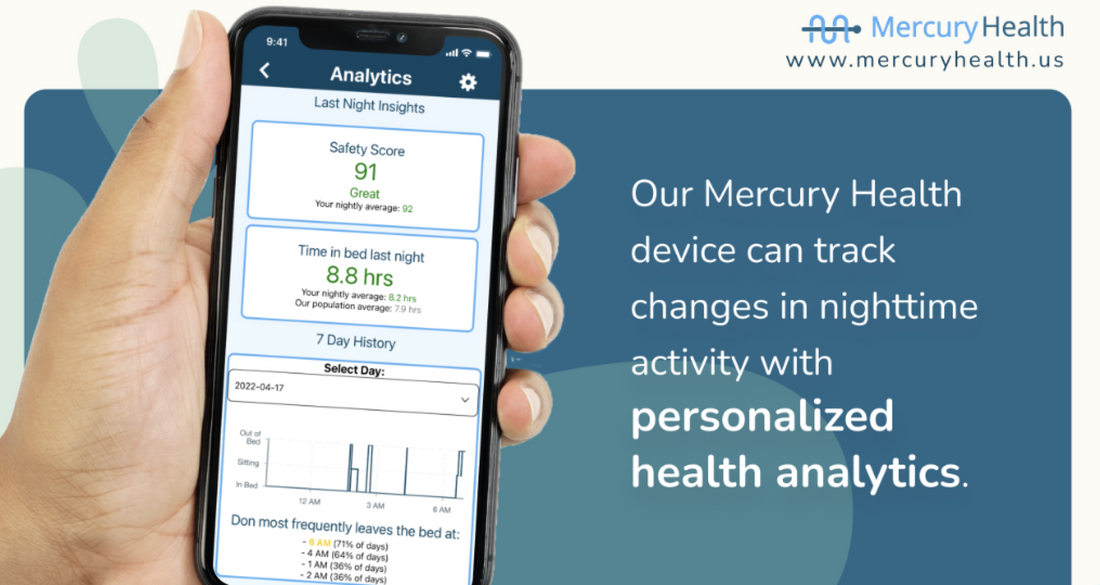At-home elder care is a difficult topic to discuss both in regard to one’s loved one and the effect this new phase of life has on one’s emotional state, financial status, etc. However, those entering this new phase are not alone, both in terms of people and technology made to assist elders. Like the people one takes into consideration and assesses to enter their loved one’s life – doctors, nurses, and caregivers – the same should be done for technology. The two major categories of at-home eldercare technology include wearable and non-wearable technology, but both major categories then feature multiple different types of products. This article hopes to explain the difference between the two types and provide the options people have for their loved ones.
The first kind of elder technology are wearables. As the name suggests, this kind of technology is worn by users to assist them in their day-to-day activities. One of the most popular examples of this variety are the vast array of smartwatches that serve as multifunction devices. Notable smartwatches on the market include the Apple Watch 5, Fitbit Versa 2, Freedom Guardian, and UnaliWear’s Kanega watch. If multifunction devices are not the preference of your loved one, other types of smart devices that are not multifunction and only serve a singular purpose also exist. Such single-purpose devices include CarePredict’s Tempo Watch, CareBand, and, perhaps the most well-known, Life Alert. Although the market of wearable technology also caters to a wide variety of health issues including cholesterol, diabetes, etc., the products listed here primarily focus on the monitoring of your loved ones and providing alerts when particular situations occur, such as falling.
The benefit of this kind of technology is loved ones have a physical piece of hardware that they can interact with, providing a sense of security, on top of the benefits of the product. Products like the Apple Watch 5 boast health tracking, automatic fall detection, and an SOS button. The other products also either have all the features previously mentioned or some combination. However, where wearable devices, like products that boast an SOS button, often fall short is in predicting the fall. Wearable technology is often best suited for scenarios where a loved one is in the process of falling or has already fallen and needs assistance. For the latter, however, it is just as likely that the elder can become incapacitated and unable to reach the SOS button. Thus, while wearable technology has its place, its shortcomings have opened the door to non-wearable tech solutions.
As the name implies, non-wearables are not worn by the user but are usually installed in the elder’s residence but can be accessed at any time via a mobile device. Popular examples of non-wearable products include Origin, Echo, and Mercury Home. All three of these products are designed to detect and assess a variety of activities performed by a loved one in order to accurately predict when a particular scenario like a fall or struggling to leave the bed occur, as well as provide insights into other potential issues that can arise from these scenarios like the increased likelihood of UTIs. These products are made possible through the advent of artificial intelligence (AI).
AI makes it possible for these solutions to monitor and analyze the behaviors of loved ones, while actually not surveilling the elder. In contrast to monitoring systems like cameras, which require the attention of another user, AI removes the need for another person and their constant watch and simply notifies the main caregiver and other emergency contacts when the technology detects the potential of an emergency and when the emergency occurs without the need of the elder pressing an SOS button. Thus, the non-wearable device is best suited for prevention and cases in which the elder becomes incapacitated and can no longer reach for help.
Although wearable solutions do still have a place in the pantheon of eldercare as they serve an almost first line of defense type of role – being the first thing a loved one might reach out for – the AI in non-wearables can also serve the same purpose and then some. The advent of AI has made it so that elders are truly never defenseless, almost as if a caretaker is always within reach, and adds an extra layer of security. Given all of the information previously discussed, it becomes apparent that the technology used for elders should be evaluated as though they were human caretakers. As the field of AI improves, so do the solutions available to caretakers and their loved ones, making the evaluation and decision-making process a lot easier.
To see and read more about how AI is continuing to expand within the realm of eldercare, making the transition to at-home elder care easier, make sure to visit our website (https://www.mercuryhealth.us/) for more information and articles like this one.
